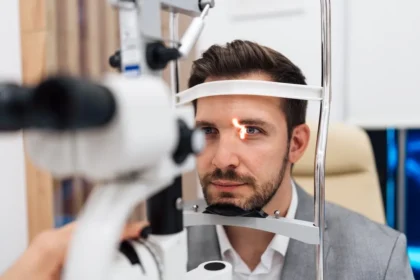Orthodontic treatments play a fundamental role in correcting dental alignment and bite issues, promoting better oral health and function. These treatments focus on adjusting teeth and jaws for proper alignment over time, often using specialized devices. For children, orthodontics is particularly valuable because addressing alignment issues early can prevent more severe problems later in life. Here’s more on the options and timing for children’s orthodontics:
Treatmenting Kids
Orthodontic treatments are not just for adults or teenagers. Early intervention can significantly improve a child’s oral health and provide long-term benefits. These treatments focus on issues like crooked teeth, overcrowding, spacing problems, and misaligned bites. Since children’s jaws are still growing, early corrections can guide proper development, reducing the need for more extensive procedures in the future. Children’s orthodontics can address noticeable dental irregularities while providing functional improvement as the primary goal.
Differing Options
Modern orthodontics provides various solutions that cater to different dental needs, allowing personalized treatments for children. Some children may require only mild corrections, while others may need comprehensive treatment to address multiple issues. For children with complex dental problems, combination treatments may be necessary to correct both alignment and bite concerns. The choice of treatment often depends on factors like the severity of the issue, overall oral health, and the child’s age.
Traditional Braces
Traditional braces are one of the most commonly used options for children. Made of metal brackets and wires, these braces are highly effective at addressing a wide range of dental alignment issues. They are durable, cost-effective, and suitable for moderate to severe orthodontic needs.
Ceramic Braces
Ceramic braces, on the other hand, function similarly to traditional braces but are made from tooth-colored materials, making them less noticeable. This option is popular among children and teenagers who may feel self-conscious about wearing braces. While ceramic braces are less visible, they may require more maintenance to prevent staining.
Self-Ligating Braces
Self-ligating braces are another innovative option. These braces use a sliding mechanism to hold the archwire without the need for elastic bands. This design reduces friction, potentially making adjustments more comfortable and requiring fewer orthodontic visits. Self-ligating braces are also available in metal or ceramic materials, providing additional aesthetic flexibility.
Starting Your Child’s Treatments
The American Association of Orthodontists recommends that children undergo their first orthodontic evaluation by age 7. This early assessment allows orthodontists to identify potential issues while the child’s jaw and teeth are still developing. Early-phase orthodontics may begin earlier to correct significant developmental problems. Factors like jaw alignment, the number of baby teeth remaining, and the presence of functional issues like overbites or underbites influence the ideal timing for treatment. Consulting with an orthodontist early can help establish a clear timeline and determine whether immediate or phased treatment is necessary.
Learn About Children’s Orthodontics Today
Understanding the basics of children’s orthodontics can empower parents to make decisions that support their child’s long-term oral health. From traditional braces to newer options like ceramic and self-ligating braces, orthodontists can customize treatments to meet each child’s unique needs. Early evaluations and timely intervention are key to maximizing the benefits of orthodontic care while minimizing potential complications. Contact a qualified orthodontist today to assess your child’s specific needs and create a tailored treatment plan.










